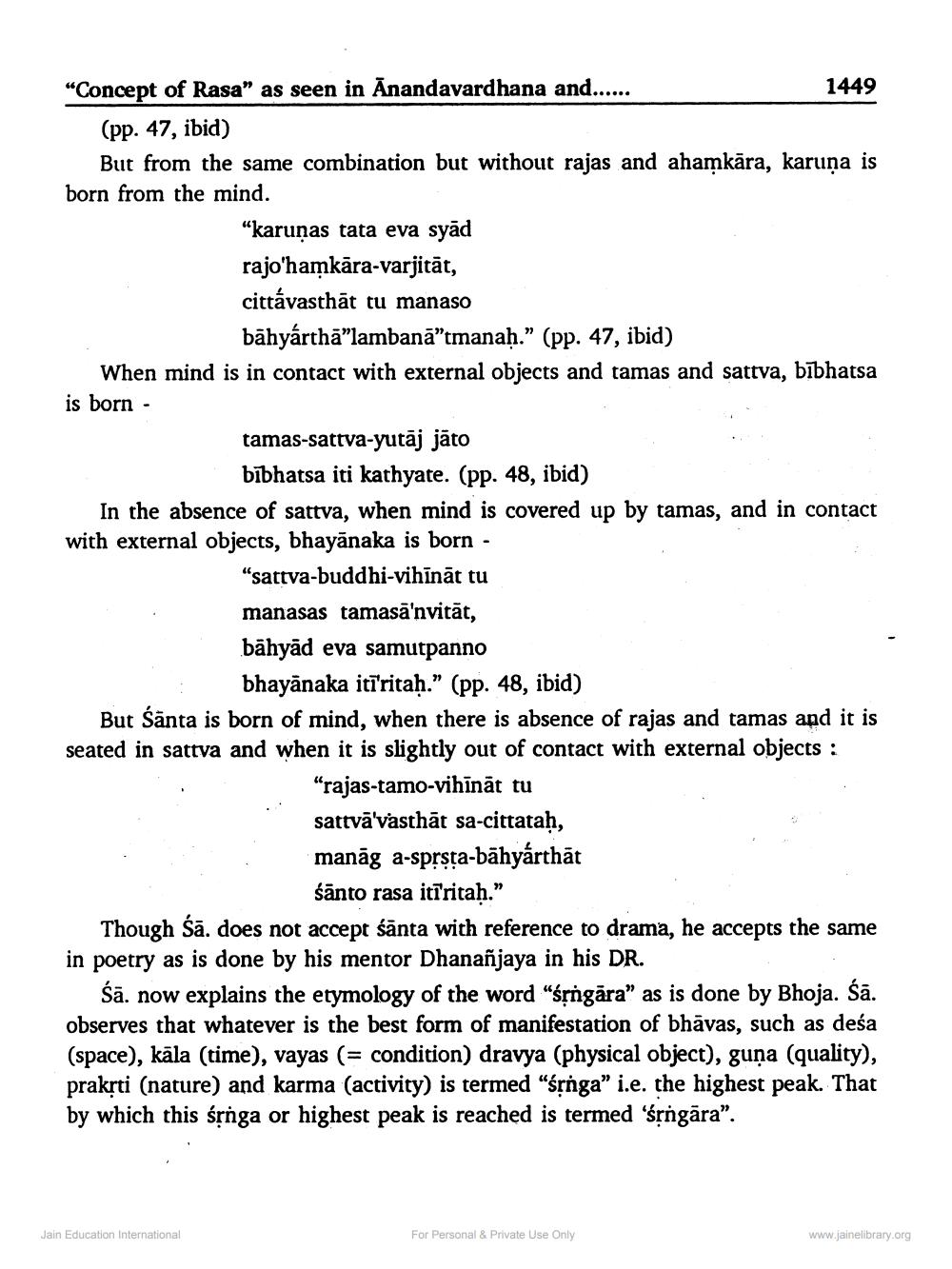________________
"Concept of Rasa" as seen in Anandavardhana and......
(pp. 47, ibid)
But from the same combination but without rajas and ahamkāra, karuņa is born from the mind.
"karuņas tata eva syād
rajo'hamkāra-varjitāt, cittávasthāt tu manaso
bahyarthā"lambanā”tmanaḥ." (pp. 47, ibid)
When mind is in contact with external objects and tamas and sattva, bībhatsa is born -
tamas-sattva-yutāj jāto
bībhatsa iti kathyate. (pp. 48, ibid)
In the absence of sattva, when mind is covered up by tamas, and in contact with external objects, bhayānaka is born -
"sattva-buddhi-vihīnāt tu
manasas tamasa'nvitāt,
bāhyād eva samutpanno
Jain Education International
1449
bhayanaka iti'ritaḥ." (pp. 48, ibid)
But Santa is born of mind, when there is absence of rajas and tamas and it is seated in sattva and when it is slightly out of contact with external objects :
"rajas-tamo-vihīnāt tu sattva'vasthāt sa-cittataḥ,
manāg a-sprṣṭa-bahyarthāt śānto rasa itî'ritaḥ."
Though Śā. does not accept santa with reference to drama, he accepts the same in poetry as is done by his mentor Dhananjaya in his DR.
Śā. now explains the etymology of the word "śṛngara" as is done by Bhoja. Śā. observes that whatever is the best form of manifestation of bhāvas, such as deśa (space), kāla (time), vayas (= condition) dravya (physical object), guna (quality), prakṛti (nature) and karma (activity) is termed "śrnga" i.e. the highest peak. That by which this śṛnga or highest peak is reached is termed 'śṛngāra".
For Personal & Private Use Only
www.jainelibrary.org




